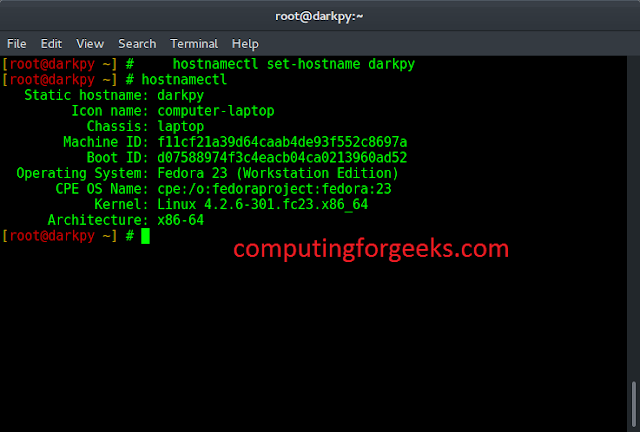In this article, we are going to see the Pulse Animation feature. This feature can be used if we are downloading something from the server. Then till the time, it is downloading we can add this feature. A sample GIF is given below to get an idea about what we are going to do in this article. Note that we are going to implement this project using the Java language.

Step by Step Implementation
Step 1: Create a New Project
To create a new project in Android Studio please refer to How to Create/Start a New Project in Android Studio. Note that select Java as the programming language.
Step 2: Add dependency
Navigate to the Gradle Scripts > build.gradle(Module:app) and add the below dependency in the dependencies section.
implementation ‘pl.bclogic:pulsator4droid:1.0.3’
Step 3: Working with the activity_main.xml file
These are the following properties for changing layout parameter
- pulse_count: Represents the Number of pulse circles
- pulse_duration: Represents the Duration in milliseconds of single pulse
- pulse_repeat: Represents the Number of pulse repeats. Zero means INFINITE
- pulse_color: Represents the ARGB pulse colors
- pulse_startFromScratch: Set to true if the animation should start from the beginning
- pulse_interpolator: Set interpolator type used for animation. Accepted values are “Linear“, “Accelerate“, “Decelerate“, “AccelerateDecelerate“
Navigate to the app > res > layout > activity_main.xml and add the below code to that file. Below is the code for the activity_main.xml file.
XML
<?xml version="1.0" encoding="utf-8"?><RelativeLayout android:layout_width="match_parent" android:layout_height="match_parent" android:layout_gravity="center" android:gravity="center" android:orientation="vertical" android:padding="16sp" tools:context=".MainActivity"> <pl.bclogic.pulsator4droid.library.PulsatorLayout android:id="@+id/pulsator" android:layout_width="326dp" android:layout_height="446dp" android:layout_alignParentTop="true" android:layout_centerHorizontal="true" android:layout_marginTop="89dp" app:pulse_color="#CA3D3D" app:pulse_count="1" app:pulse_duration="1800" app:pulse_interpolator="Linear" app:pulse_repeat="0" app:pulse_startFromScratch="false"> <ImageView android:layout_width="wrap_content" android:layout_height="wrap_content" android:layout_centerInParent="true" android:src="@mipmap/ic_launcher_round" /> </pl.bclogic.pulsator4droid.library.PulsatorLayout> <LinearLayout android:id="@+id/kl" android:layout_width="match_parent" android:layout_height="wrap_content" android:layout_below="@id/pulsator" android:orientation="horizontal"> <TextView android:layout_width="wrap_content" android:layout_height="wrap_content" android:text="Count" /> <SeekBar android:id="@+id/count" android:layout_width="match_parent" android:layout_height="wrap_content" android:max="4" android:min="1" /> </LinearLayout> <LinearLayout android:layout_width="match_parent" android:layout_height="wrap_content" android:layout_below="@+id/kl" android:orientation="horizontal"> <TextView android:layout_width="wrap_content" android:layout_height="wrap_content" android:text="Duration" /> <SeekBar android:id="@+id/duration" android:layout_width="match_parent" android:layout_height="wrap_content" android:layout_below="@id/count" android:max="7" android:min="1" /> </LinearLayout> </RelativeLayout> |
Step 4: Working with the MainActivity.java file
Go to the MainActivity.java file and refer to the following code. Below is the code for the MainActivity.java file. Comments are added inside the code to understand the code in more detail.
Java
import android.os.Bundle;import android.widget.SeekBar;import androidx.appcompat.app.AppCompatActivity;import pl.bclogic.pulsator4droid.library.PulsatorLayout;public class MainActivity extends AppCompatActivity { SeekBar count, duration; @Override protected void onCreate(Bundle savedInstanceState) { super.onCreate(savedInstanceState); setContentView(R.layout.activity_main); // initialise the layout PulsatorLayout pulsator = (PulsatorLayout) findViewById(R.id.pulsator); pulsator.start(); count = findViewById(R.id.count); duration = findViewById(R.id.duration); // on change in seekbar value count.setOnSeekBarChangeListener(new SeekBar.OnSeekBarChangeListener() { @Override public void onProgressChanged(SeekBar seekBar, int i, boolean b) { // change the count pulsator.setCount(i); } @Override public void onStartTrackingTouch(SeekBar seekBar) { } @Override public void onStopTrackingTouch(SeekBar seekBar) { } }); // on change in seekbar value duration.setOnSeekBarChangeListener(new SeekBar.OnSeekBarChangeListener() { @Override public void onProgressChanged(SeekBar seekBar, int i, boolean b) { // change the duration pulsator.setDuration(i); } @Override public void onStartTrackingTouch(SeekBar seekBar) { } @Override public void onStopTrackingTouch(SeekBar seekBar) { } }); } @Override protected void onStart() { super.onStart(); }} |
Java
import android.os.Bundle;import android.widget.SeekBar;import androidx.appcompat.app.AppCompatActivity;import pl.bclogic.pulsator4droid.library.PulsatorLayout;public class MainActivity extends AppCompatActivity { SeekBar count, duration; @Override protected void onCreate(Bundle savedInstanceState) { super.onCreate(savedInstanceState); setContentView(R.layout.activity_main); // initialise the layout PulsatorLayout pulsator = (PulsatorLayout) findViewById(R.id.pulsator); pulsator.start(); count = findViewById(R.id.count); duration = findViewById(R.id.duration); // on change in seekbar value count.setOnSeekBarChangeListener(new SeekBar.OnSeekBarChangeListener() { @Override public void onProgressChanged(SeekBar seekBar, int i, boolean b) { // change the count pulsator.setCount(i); } @Override public void onStartTrackingTouch(SeekBar seekBar) { } @Override public void onStopTrackingTouch(SeekBar seekBar) { } }); // on change in seekbar value duration.setOnSeekBarChangeListener(new SeekBar.OnSeekBarChangeListener() { @Override public void onProgressChanged(SeekBar seekBar, int i, boolean b) { // change the duration pulsator.setDuration(i); } @Override public void onStartTrackingTouch(SeekBar seekBar) { } @Override public void onStopTrackingTouch(SeekBar seekBar) { } }); } @Override protected void onStart() { super.onStart(); }} |
Output:
Java
import android.os.Bundle;import android.widget.SeekBar;import androidx.appcompat.app.AppCompatActivity;import pl.bclogic.pulsator4droid.library.PulsatorLayout;public class MainActivity extends AppCompatActivity { SeekBar count, duration; @Override protected void onCreate(Bundle savedInstanceState) { super.onCreate(savedInstanceState); setContentView(R.layout.activity_main); // initialise the layout PulsatorLayout pulsator = (PulsatorLayout) findViewById(R.id.pulsator); pulsator.start(); count = findViewById(R.id.count); duration = findViewById(R.id.duration); // on change in seekbar value count.setOnSeekBarChangeListener(new SeekBar.OnSeekBarChangeListener() { @Override public void onProgressChanged(SeekBar seekBar, int i, boolean b) { // change the count pulsator.setCount(i); } @Override public void onStartTrackingTouch(SeekBar seekBar) { } @Override public void onStopTrackingTouch(SeekBar seekBar) { } }); // on change in seekbar value duration.setOnSeekBarChangeListener(new SeekBar.OnSeekBarChangeListener() { @Override public void onProgressChanged(SeekBar seekBar, int i, boolean b) { // change the duration pulsator.setDuration(i); } @Override public void onStartTrackingTouch(SeekBar seekBar) { } @Override public void onStopTrackingTouch(SeekBar seekBar) { } }); } @Override protected void onStart() { super.onStart(); }} |




